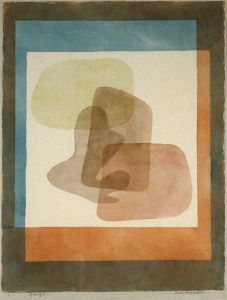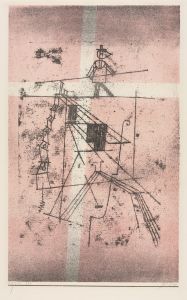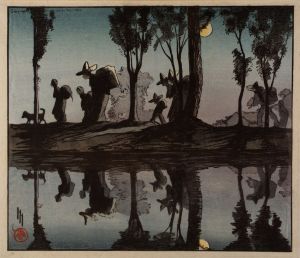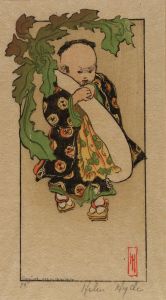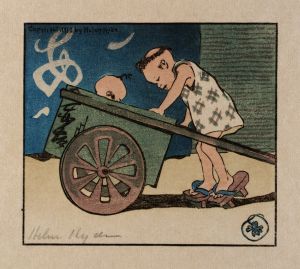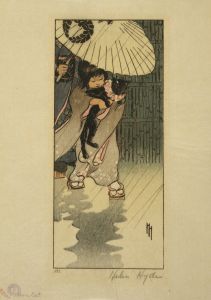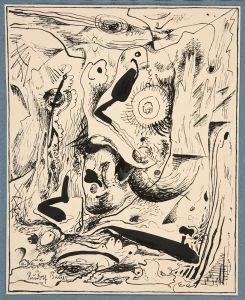
The Joggling Board
A hand-painted replica of Helen Hyde’s masterpiece The Joggling Board, meticulously crafted by professional artists to capture the true essence of the original. Each piece is created with museum-quality canvas and rare mineral pigments, carefully painted by experienced artists with delicate brushstrokes and rich, layered colors to perfectly recreate the texture of the original artwork. Unlike machine-printed reproductions, this hand-painted version brings the painting to life, infused with the artist’s emotions and skill in every stroke. Whether for personal collection or home decoration, it instantly elevates the artistic atmosphere of any space.
Helen Hyde (1868-1919) was an American artist known for her work in printmaking and painting, particularly her contributions to the Japonisme movement, which was characterized by the influence of Japanese art on Western artists. One of her notable works is "The Joggling Board," which showcases her distinctive style and thematic interests.
"The Joggling Board" is a color woodcut print created by Helen Hyde in 1913. This piece exemplifies her skill in combining Western and Eastern artistic traditions. Hyde was particularly influenced by Japanese woodblock printing techniques, which she studied extensively during her time in Japan. Her work often features delicate lines, careful attention to detail, and a harmonious use of color, all of which are evident in "The Joggling Board."
The subject of "The Joggling Board" is a young girl seated on a joggling board, a type of long, flexible board traditionally used in the Southern United States. These boards were often placed on porches and used for gentle rocking or bouncing. The inclusion of this element in Hyde's work reflects her interest in capturing everyday scenes and objects, infusing them with a sense of charm and tranquility.
In "The Joggling Board," the young girl is depicted in a serene, contemplative pose, with her hands resting on her lap and her gaze directed downward. The background is minimalistic, allowing the viewer to focus on the figure and the board. Hyde's use of soft, muted colors and delicate lines creates a sense of calm and introspection, characteristic of her style.
Helen Hyde's time in Japan had a profound impact on her artistic development. She studied under prominent Japanese printmakers, including Kano Tomonobu, and adopted many of their techniques. Her work often features elements of Japanese aesthetics, such as asymmetrical compositions, flat areas of color, and an emphasis on simplicity and elegance. "The Joggling Board" is a testament to her ability to blend these influences with her own unique vision.
Hyde's contributions to the art world were significant, particularly in the context of the early 20th century when the Japonisme movement was gaining momentum. Her work helped to bridge the gap between Eastern and Western art, bringing Japanese techniques and sensibilities to a broader audience. "The Joggling Board" is a prime example of her ability to create works that are both culturally rich and visually appealing.
Today, Helen Hyde's prints are highly regarded and can be found in various museum collections, including the Smithsonian American Art Museum and the Library of Congress. Her legacy continues to be celebrated for its innovative fusion of artistic traditions and its enduring beauty.
In summary, "The Joggling Board" by Helen Hyde is a color woodcut print that reflects the artist's mastery of combining Western and Japanese artistic techniques. The piece captures a moment of quiet reflection, showcasing Hyde's skill in creating serene and harmonious compositions. Her work remains an important part of the history of printmaking and the Japonisme movement.






